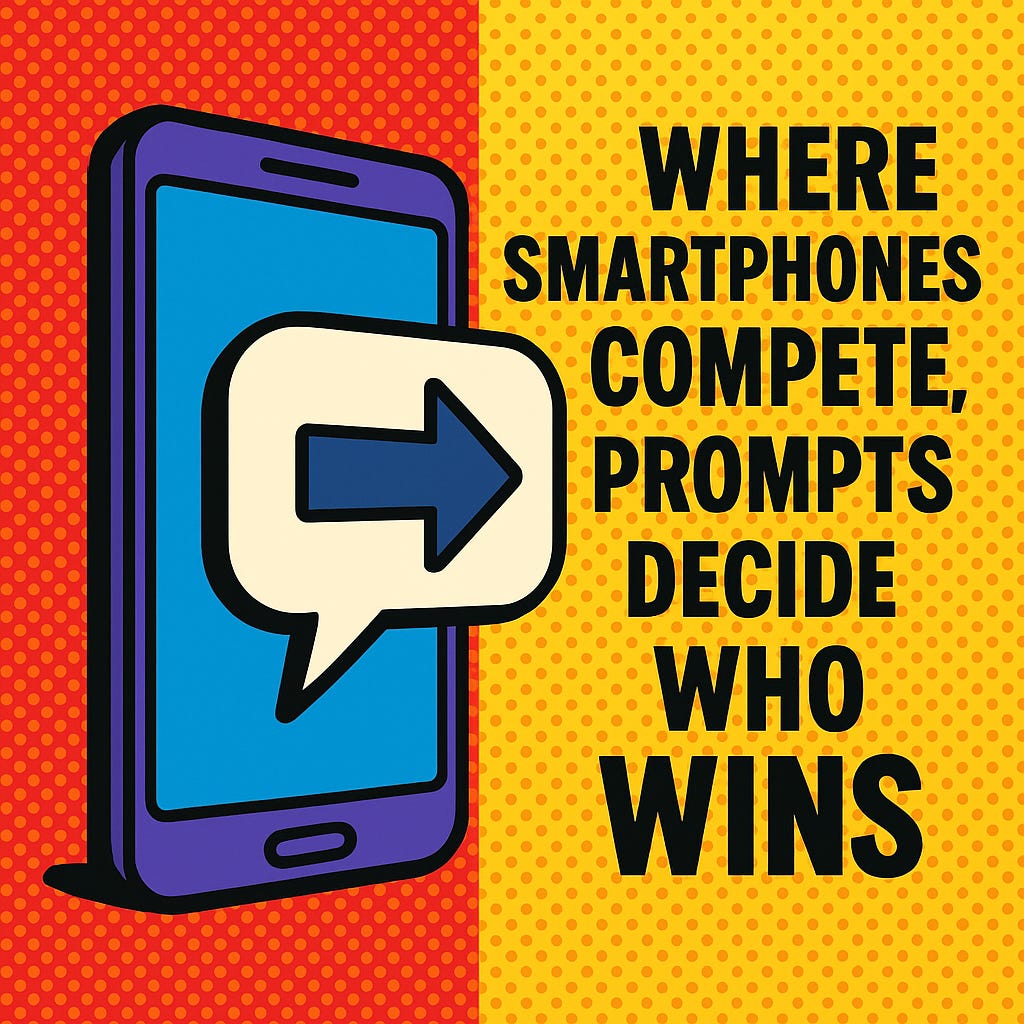Where Smartphones Compete, Prompts Decide Who Wins.
Strategic Significance of System Prompt Design for the Smartphone Market
In the hyper-competitive smartphone market, the battlefield has shifted from hardware superiority to the forefront of user experience (UX). Hardware specifications—camera megapixels, battery capacity, processor speed—have become increasingly standardized. As a result, users are no longer swayed by raw specs alone. Instead, they now value interaction quality—how well a device understands them and responds naturally—as the true measure of a product’s excellence.
This is precisely where system prompt design begins to emerge as a key strategic differentiator.
1. Why System Prompt Design Becomes a Strategic Asset
System prompt design is not just about crafting polished UI texts or chatbot conversations. It serves as a strategic interface between machine cognition and human understanding. Particularly for smartphones—devices intimately woven into the fabric of daily life—the quality of this interaction directly translates to user trust, satisfaction, and ultimately, brand loyalty.
It enables companies to position themselves not merely as device providers, but as intelligent assistants or personalized agents. This is not just a technical upgrade, but a redefinition of strategic positioning, capable of reshaping a company’s market identity.
2. Data-Driven Design Integrated with Brand Identity
Effective system prompts must understand context and emotional nuance. To achieve this, data-driven decision making is essential. Every input—typing patterns, search queries, app usage—feeds into a data stream that enables fine-tuned control over tone of voice, question styles, and feedback mechanisms within the prompt system.
The strategic insight here is that this data-powered design must not only be technically robust, but also deeply aligned with the brand’s identity. For instance, Apple’s Siri emphasizes friendliness and personality, while Samsung’s Bixby focuses on functional efficiency. Each reflects the brand’s philosophy and its strategy for engaging users.
3. Gaining Competitive Advantage Through Ecosystem Design
Today’s competitive edge lies not in standalone product features, but in the consistency of experiences across a platform ecosystem. System prompts function as bridges of continuity, linking user experiences across multiple devices—and in doing so, they become central to lock-in strategies.
When users issue a voice command via smartphone that continues seamlessly on a tablet, wearable, or smart home device, it is the prompt design that ensures coherence and fluidity across contexts. This experience continuity helps maximize retention and reuse, key goals of any sustainable business model.
4. Strategic AI Evolution and Organizational Change
System prompts are more than UI enhancements—they are the user’s primary perception point of AI intelligence. Thus, the implementation of prompt systems requires comprehensive change management. Developers, UX designers, strategists, and brand managers must bridge disciplinary gaps to build AI-centric organizational workflows.
For traditional hardware-centric companies transitioning to a software-first paradigm, prompt design lies at the heart of that evolution. It is not simply about writing “good copy,” but about redesigning operational and identity frameworks for a new technological era.
5. Future Outlook: Prompt Design as a Strategic Asset
Looking ahead, system prompt design will move beyond UX utility to become a core competitive asset in the smartphone market.
Establishing a Digital Brand Voice
Marketing prompt system performance as a product feature
Automating AI-adaptive prompt systems personalized in real time
These aren’t just technical advancements—they demand strategic transformation. Prompt design is no longer an add-on feature; it is now central to competitiveness, serving as an intelligent communication tool that embodies a brand’s ethos.
In summary, system prompt design in the smartphone market sits at the intersection of user experience and brand strategy, where technology meets business in its most dynamic form.



